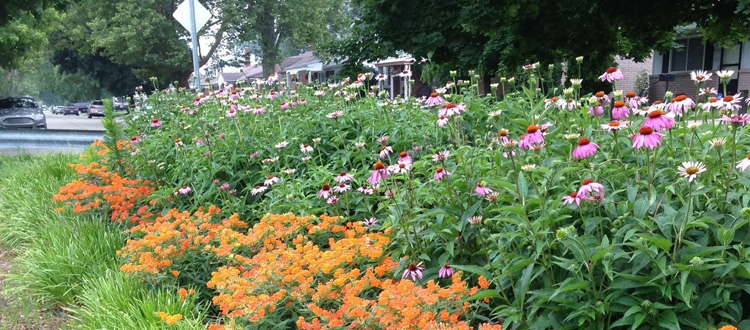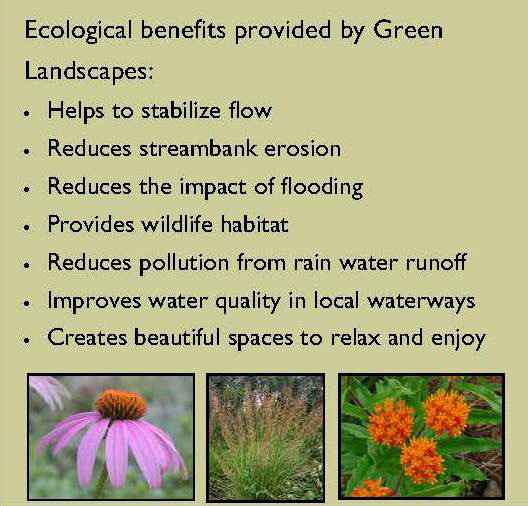Protecting the Rouge in Your Yard
Explore below how you can protect the Rouge River, right in your own backyard! Each step provides measurable benefit for your creek. Together, they add up to a realized vision that contributes towards a clean and vibrant Rouge River at the center of our community.
Green Landscaping
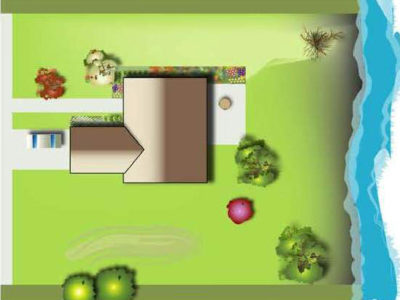
Standard, high-impact home landscape
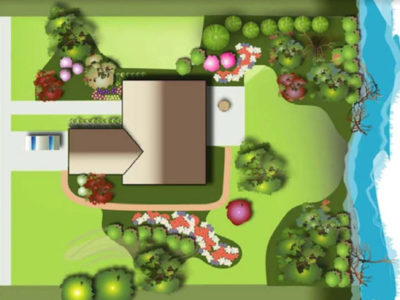
A realized vision: green landscaping for clean streams—applicable to all houses, no matter how far from the river
Sustainable Landscaping
A landscape created with Green Landscaping for Clean Streams techniques is designed to improve water quality and wildlife habitat and is much more sustainable. Plantings are clustered. Steep slopes are vegetated with deep-rooted native flowers and grasses. Rain gardens retain water from the home’s downspouts. Stream-side vegetation reduces streambank erosion. Habitat is created for birds, butterflies and other wildlife.
Conserving Water
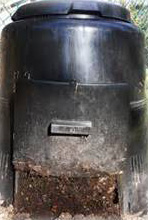 Compost provides nutrients and improves garden soil. Composting is easy and saves waste from being trucked to a landfill or a composting facility. Compost acts like a sponge and soaks up lots of rainwater.
Compost provides nutrients and improves garden soil. Composting is easy and saves waste from being trucked to a landfill or a composting facility. Compost acts like a sponge and soaks up lots of rainwater.
How to do it:
- Create a compost pile or purchase a commercial composter
- Add soil, grass clippings, leaves, garden waste, and some food waste (no meats, oils, dairy)
- Visit the SOCWA Lawn & Garden website for more composting information (www.socwa.org) Composting flyer
Mulch Garden Beds
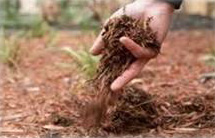 Mulch helps to retain moisture in the garden and helps to reduce weeds. Mulch also keeps gardens looking fresh and cared for.
Mulch helps to retain moisture in the garden and helps to reduce weeds. Mulch also keeps gardens looking fresh and cared for.
Reducing Pollution
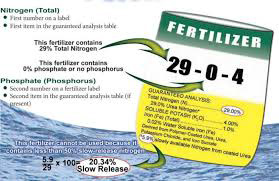 Many of the herbicides, pesticides and fertilizers used by gardeners today are harmful to the environment and should never be used near waterways. Excess nutrients from lawn fertilizers harm rivers and lakes. Opt for healthier alternatives for you and your family. More information:
Many of the herbicides, pesticides and fertilizers used by gardeners today are harmful to the environment and should never be used near waterways. Excess nutrients from lawn fertilizers harm rivers and lakes. Opt for healthier alternatives for you and your family. More information:
Pick up Pet Waste
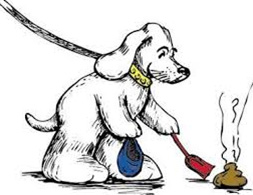 Pick up pet waste before rainy weather or snow melt to prevent bacteria from entering the river through the storm sewer. Many communities in the Rouge watershed have separate storm sewers that collect rain water from streets and parking lots and discharge directly to the Rouge River. The water isn’t treated and rain water picks up lots of pollutants from lawns, parking lots, roads and highways.
Pick up pet waste before rainy weather or snow melt to prevent bacteria from entering the river through the storm sewer. Many communities in the Rouge watershed have separate storm sewers that collect rain water from streets and parking lots and discharge directly to the Rouge River. The water isn’t treated and rain water picks up lots of pollutants from lawns, parking lots, roads and highways.
Reducing Stormwater Runoff
The #1 problem for the Rouge River is too much dirty runoff water each time it rains. Find out how you can do your part: Get RainSmart!
Reducing Stream Bank Erosion
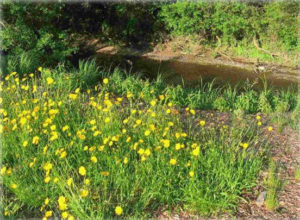 A cost effective method to reduce streambank erosion and save riverfront property is to plant deep-rooted native wildflowers and grasses. The fibrous root systems create a living mesh that will help hold the soil in place. Native trees and shrubs provide shade in warm months, which is important to keep water temperature from rising and dissolved oxygen levels from falling too low to support life in the stream.
A cost effective method to reduce streambank erosion and save riverfront property is to plant deep-rooted native wildflowers and grasses. The fibrous root systems create a living mesh that will help hold the soil in place. Native trees and shrubs provide shade in warm months, which is important to keep water temperature from rising and dissolved oxygen levels from falling too low to support life in the stream.
Stabilizing the Toe (Bottom of the Streambank)
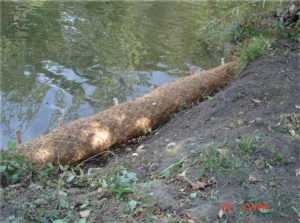 Coir logs or large woody debris can be staked in to reduce localized erosion at the toe of the bank. This may be necessary to allow native vegetation to become established in erosion prone areas. Erosion control blankets may also be necessary to protect plantings from washing away in high water. A permit from MDEQ is required before this work can be completed. More information:
Coir logs or large woody debris can be staked in to reduce localized erosion at the toe of the bank. This may be necessary to allow native vegetation to become established in erosion prone areas. Erosion control blankets may also be necessary to protect plantings from washing away in high water. A permit from MDEQ is required before this work can be completed. More information:
Managing Woody Debris
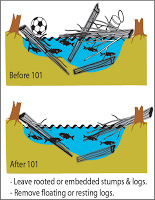 In the recent past, logjams were presumed to be a significant problem in urban rivers, such as the Rouge River, and were completely removed from stream channels. New studies have now shown that properly managed logjams help reduce erosion, provide habitat for fish and wildlife, and are an important part of a river system’s natural processes. More information:
In the recent past, logjams were presumed to be a significant problem in urban rivers, such as the Rouge River, and were completely removed from stream channels. New studies have now shown that properly managed logjams help reduce erosion, provide habitat for fish and wildlife, and are an important part of a river system’s natural processes. More information:

